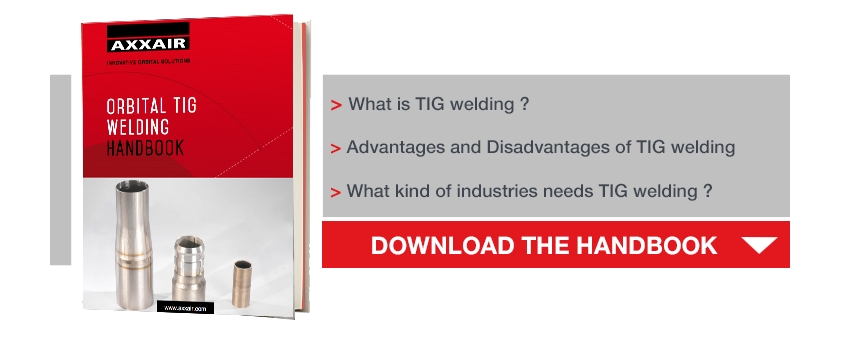The durability of tube junctions is an essential aspect of equipment safety!
In the case of manual welding, the welder is the one handling the finishing touches. He is responsible for the final quality of the structure, so the safety of the entire structure is closely linked to his professionalism. In delicate sectors that are subject to numerous standards, the final quality must be no less than perfect.
The quality of the assembly is a vital factor in ensuring the safety and security of the equipment. Orbital welding, and the automation of the process, will help welders and will meet the standards of high-quality welds.
.
NEARLY-INVISIBLE THREADS THAT ARE VITALLY IMPORTANT
Welding allows for the connection of distinct parts and the formation of a continuous element. The thread used to fuse the edges of different components together needs to be of high quality. A poor-quality weld can have dramatic consequences.
THE RISKS OF POOR-QUALITY WELDING
- A poorly executed weld can lead to water, chemical or gas leaks, which entail risks of varying seriousness depending on the nature of the product. These risks can range from excess water consumption through to contamination of an entire site, not to forget the risks of explosion or fire. As such, the importance of high quality welding becomes obvious. The manufacturing of semi-conducting components, particularly for the gas industry, requires tubing that is perfectly sealed against humidity, oxygen and all particulate matter.
- A faulty weld can cause problems for sanitation and healthcare by creating retention zones for fluids, cracks, and ingress routes for bacteria coming from the outside.
- Neglecting the quality of welding also leads to a risk of oxidization or corrosion. Pharmaceutical or biotech industries make use of networks of tubes that require specific cleaning. The importance of high-quality welds, and automating the welding process, goes hand in hand with requirements for cleanliness and purity.
- Orbital welding also delivers better visual results.
Sometimes, the surface quality of tubes is not good enough to execute a weld. In this case, the tubes need to be squared in advance!
AUTOMATION OF ORBITAL WELDING TO ENSURE PERFECT QUALITY
Orbital welding is an automated technique that uses a power supply and a welding head with an attached electrode that rotates around a 360 degree tubular axis to create the weld joint. Orbital welding is ideal for tube to tube sheet welding and tube/tube welding.
ALL YOU NEED TO KNOW ABOUT TIG-WELDING
- Automation of orbital welding allows for the repeatability of welds. Once a suitably adapted orbital welding program has been developed, the automation of the orbital welding cycle can be repeated as often as necessary without creating any differences between individual welds or introducing any new defects.
- The aeronautical industry leads the way in recognizing the benefits of automating orbital welding. Some parts may require over 1500 identically welded joints. Only an automated welding process with the use of appropriate hardware can respond to the need for high-quality welds while preventing manmade errors.
- Orbital welding and its automation can be applied in confined spaces and in zones where rotating the welding machine would make manual welding difficult and more risky.
- The welding quality also depends on orbital welded joints, which offer better corrosion resistance. Their smoother surface can then be treated chemically to counteract any subsequent oxidation or corrosion.
The quality of a weld obtained via automation using an orbital process is superior to the results of a manual weld. Switching to an orbital welding process using the appropriate hardware reflects the importance of high-quality welds and guarantees for safety and long-lasting installations.



